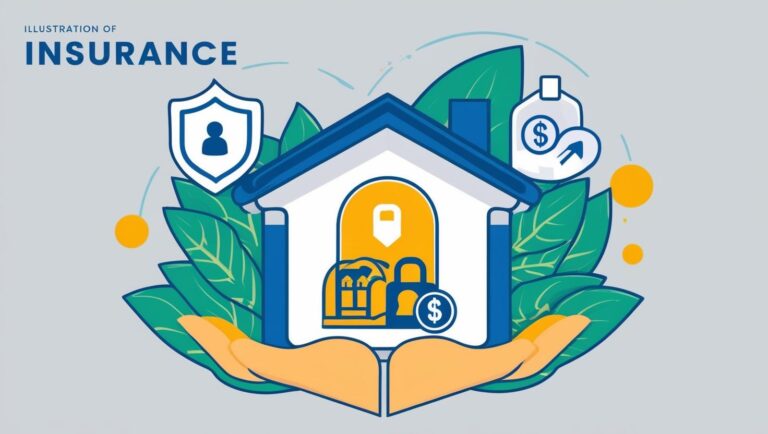Auto Insurance for Uber and Lyft Drivers: What’s Covered and What’s Not
Discover essential considerations for Uber and Lyft drivers when evaluating insurance options. Learn about cost, coverage limits, and adherence to company requirements for adequate protection on the road.
Ride-sharing apps like Uber and Lyft have changed how folks travel, making it easier and more flexible for both riders and drivers. But for drivers working with these apps, knowing about auto insurance is super important. In this blog post, we’re going to talk about the basics of auto insurance for Uber and Lyft drivers. We’ll break down what’s covered and what’s not, so you can feel more confident hitting the road. Let’s dive in!
Related: Top 7 Auto Insurance Discounts You Didn’t Know Existed
Auto Insurance for Uber and Lyft Drivers
Understanding the Basics of Ride-Sharing Insurance
Ride-sharing is when you use your own vehicle to give rides to passengers in exchange for payment. It’s a bit different from regular driving because you’re essentially using your car as a business. This means that standard personal auto insurance policies may not provide sufficient coverage for ride-sharing activities. Instead, specialized insurance coverage is needed to protect both drivers and passengers.
Unlike traditional personal auto insurance, which is designed for personal use, ride-sharing activities fall under commercial use. This distinction is important because it affects the type of insurance coverage required. Both Uber and Lyft, as leading ride-sharing companies, have their own insurance requirements for drivers.
These insurance requirements can vary depending on the stage of the ride
App Off: When the ride-sharing app is turned off and you’re using your car for personal use, your personal auto insurance policy typically applies.
App On, No Ride Accepted: Once you’ve turned on the ride-sharing app but haven’t accepted a ride request yet, you may have limited coverage provided by the ride-sharing company. This coverage is often referred to as contingent liability coverage.
En Route to Pick Up Passenger: When you’ve accepted a ride request and are on your way to pick up the passenger, the ride-sharing company’s insurance coverage usually kicks in. This coverage typically includes third-party liability coverage and contingent comprehensive and collision coverage.
Passenger in Vehicle: Once the passenger is in your car, the ride-sharing company typically provides the most comprehensive coverage, including third-party liability coverage, contingent comprehensive and collision coverage, and uninsured/underinsured motorist coverage.
It’s important for ride-sharing drivers to understand these insurance requirements and ensure they have the appropriate coverage in place for each stage of the ride. Failure to have adequate insurance coverage could leave drivers financially vulnerable in the event of an accident. Therefore, it’s essential to review and understand the insurance requirements set forth by Uber, Lyft, or any other ride-sharing company you drive for.
Coverage Provided by Uber and Lyft
- During different stages of a ride, Uber and Lyft offer different levels of insurance coverage to their drivers.
- App Off: When the ride-sharing app is turned off and you’re not actively working, your personal auto insurance policy applies. This means that if you get into an accident during this time, your personal insurance will be responsible for covering any damages.
- App On, No Ride Accepted: Once you’ve turned on the ride-sharing app but haven’t accepted a ride request yet, Uber and Lyft provide contingent liability coverage. This coverage offers limited protection in case you’re involved in an accident while waiting for a ride request.
- En Route to Pick Up Passenger and During the Ride: Once you’ve accepted a ride request and are on your way to pick up the passenger, as well as during the ride itself, Uber and Lyft provide more comprehensive coverage. This includes:
- Third-party liability coverage: This protects you if you’re at fault for an accident and covers the other party’s injuries or property damage.
- Contingent comprehensive and collision coverage: This helps cover damages to your vehicle, regardless of who’s at fault, during the ride or while en route to pick up a passenger.
- Uninsured/underinsured motorist coverage: This provides protection if you’re involved in an accident with a driver who doesn’t have insurance or doesn’t have enough insurance to cover your damages.
It’s important for ride-sharing drivers to understand the coverage provided by Uber and Lyft during each stage of the ride. This knowledge helps ensure that drivers are adequately protected in case of an accident or other unforeseen events while driving for these platforms.
Coverage Gaps and Limitations
Despite the coverage provided by Uber and Lyft during active rides, there are still gaps and limitations to be aware of, particularly during periods when the ride-sharing app is on but no ride is accepted.
Personal Auto Insurance Exclusions: Many personal auto insurance policies explicitly exclude coverage for ride-sharing activities. This means that if you’re driving with the ride-sharing app on but haven’t accepted a ride request, your personal auto insurance may not provide coverage. This gap in coverage leaves drivers vulnerable to potential financial losses in the event of an accident or other incidents during this time.
Limited Contingent Coverage: While Uber and Lyft offer contingent liability coverage when the app is on but no ride is accepted, this coverage is often limited and may not fully protect drivers in all situations. Contingent coverage typically only kicks in after your personal auto insurance policy limits are exhausted, leaving drivers responsible for any remaining damages.
Exclusions and Deductibles: Even during active rides, Uber and Lyft’s insurance coverage may have exclusions and deductibles that drivers are responsible for. For example, certain types of damage may not be covered, or there may be high deductibles that drivers must pay out of pocket before coverage applies.
Potential Coverage Gaps: Depending on the specific circumstances of an accident or incident, there may be other potential coverage gaps or limitations not addressed by Uber and Lyft’s insurance policies. Drivers should carefully review their insurance coverage options to ensure they have adequate protection during all stages of ride-sharing activities.
It’s essential for ride-sharing drivers to be aware of these coverage gaps and limitations and take steps to address them. This may include purchasing additional insurance coverage or exploring alternative options to ensure comprehensive protection while driving for Uber, Lyft, or other ride-sharing platforms. By understanding and addressing potential coverage gaps, drivers can better protect themselves and their financial interests on the road.
Options for Closing Coverage Gaps
To address the coverage gaps and limitations associated with ride-sharing activities, Uber and Lyft drivers have several options available to them:
Endorsements or Riders for Personal Auto Insurance Policies: Some insurance companies offer endorsements or riders that can be added to personal auto insurance policies to provide coverage for ride-sharing activities. These endorsements typically fill the gaps left by standard personal auto insurance policies, ensuring that drivers are adequately protected while driving for Uber or Lyft.
Commercial Auto Insurance Policies Tailored for Ride-Sharing Drivers: Another option is to purchase a commercial auto insurance policy specifically designed for ride-sharing drivers. These policies are specifically tailored to meet the unique needs of ride-sharing activities and typically provide more comprehensive coverage than personal auto insurance policies.
Hybrid Policies Combining Personal and Commercial Coverage: Some insurance companies offer hybrid policies that combine elements of personal and commercial coverage. These policies are designed to bridge the gap between personal and commercial insurance, providing coverage for both personal use and ride-sharing activities.
Additional Coverage Options from Independent Insurers: In addition to the coverage options offered by Uber and Lyft, drivers may also explore additional coverage options from independent insurers. Independent insurers may offer specialized insurance products designed specifically for ride-sharing drivers, providing additional protection and peace of mind.
Exploring these options for closing coverage gaps, means Uber and Lyft drivers can ensure that they have adequate insurance coverage in place to protect themselves and their passengers while on the road. It’s essential for drivers to carefully consider their insurance needs and explore all available options to find the coverage that best fits their unique circumstances.
Considerations for Uber and Lyft Drivers
When it comes to evaluating insurance options, Uber and Lyft drivers should keep several factors in mind to ensure they have the right coverage.
Cost: One of the primary considerations for drivers is the cost of insurance premiums. While it’s important to find affordable coverage, drivers should also consider the level of coverage provided and whether the cost aligns with their budget.
Coverage Limits: Drivers should carefully review the coverage limits offered by different insurance policies. Adequate coverage limits ensure that drivers are protected against potential financial losses in the event of an accident or other incidents while driving for Uber or Lyft.
Ease of Claims Processing: Another important factor to consider is the ease of claims processing. Drivers should choose an insurance provider with a reputation for efficient and straightforward claims processing, ensuring that any claims are handled quickly and effectively.
Protection of Personal Assets: Being adequately insured is essential to protect personal assets and livelihood. Drivers should ensure that their insurance coverage provides sufficient protection to cover potential liabilities and damages, minimizing the risk of financial hardship in the event of an accident.
Adherence to Requirements and Recommendations: Uber and Lyft have specific requirements and recommendations regarding insurance coverage for drivers. It’s important for drivers to adhere to these requirements and recommendations to ensure compliance with company policies and regulations.
By carefully considering these factors when evaluating insurance options, Uber and Lyft drivers can choose the right coverage to protect themselves, their passengers, and their livelihood while on the road. Taking the time to review insurance options and select the appropriate coverage can provide drivers with peace of mind and confidence while driving for ride-sharing platforms.
Conclusion
Navigating auto insurance as an Uber or Lyft driver can be complex, but understanding the coverage available is essential for protecting yourself and your passengers. By exploring the coverage provided by Uber and Lyft, as well as options for closing coverage gaps, drivers can make informed decisions to ensure they’re adequately protected on the road. Remember, having the right insurance coverage is key to driving with confidence in the ride-sharing industry.






